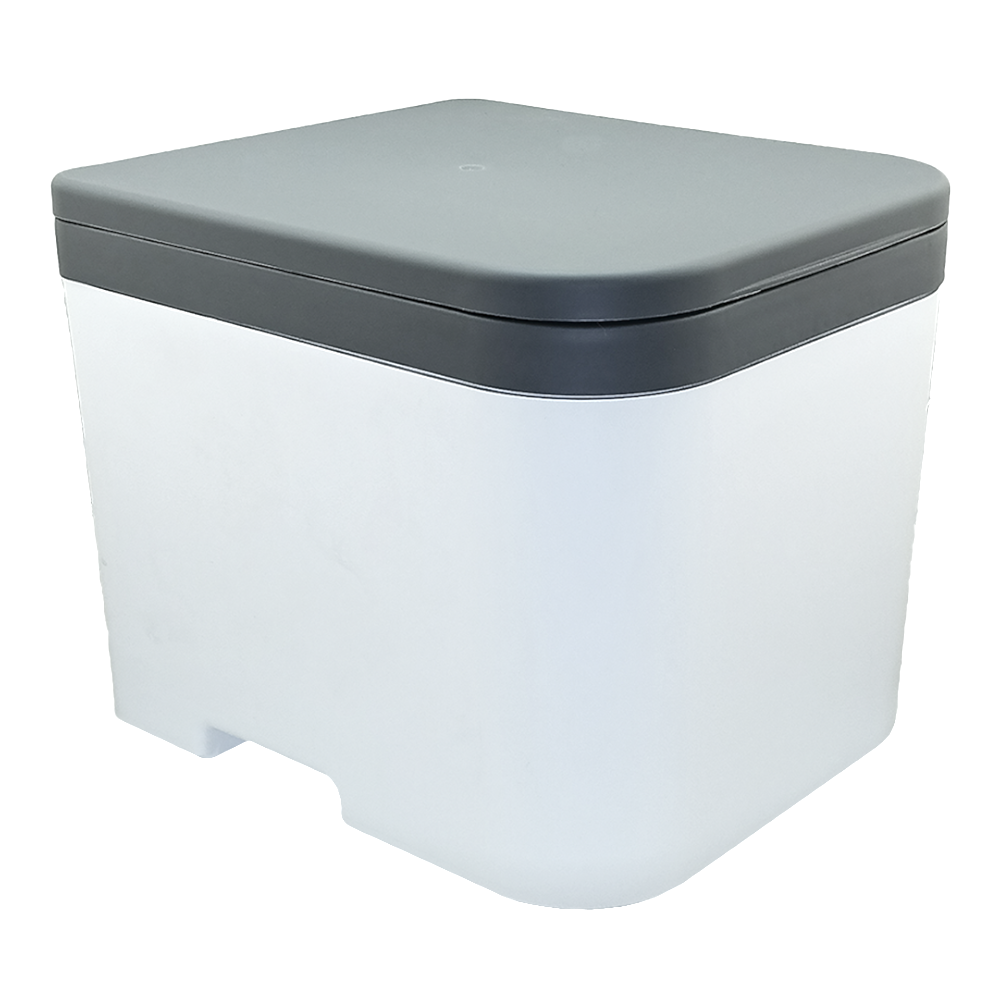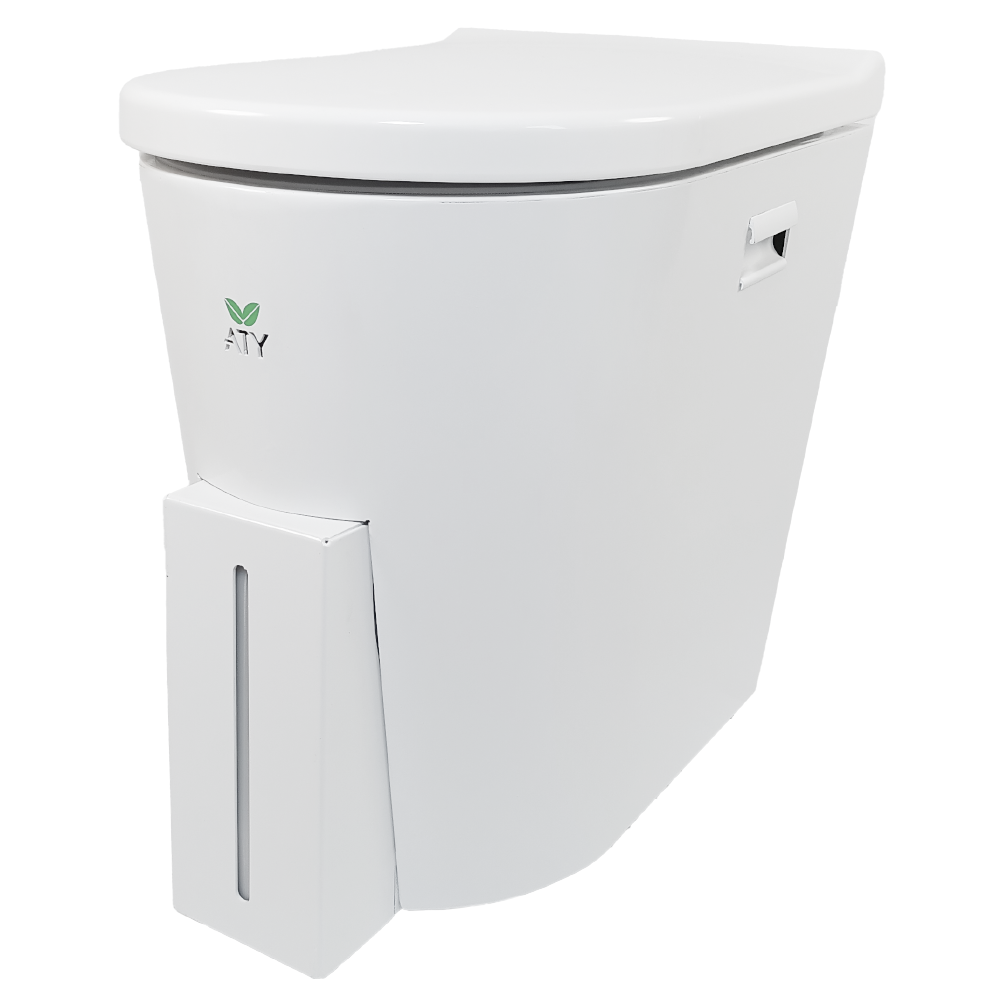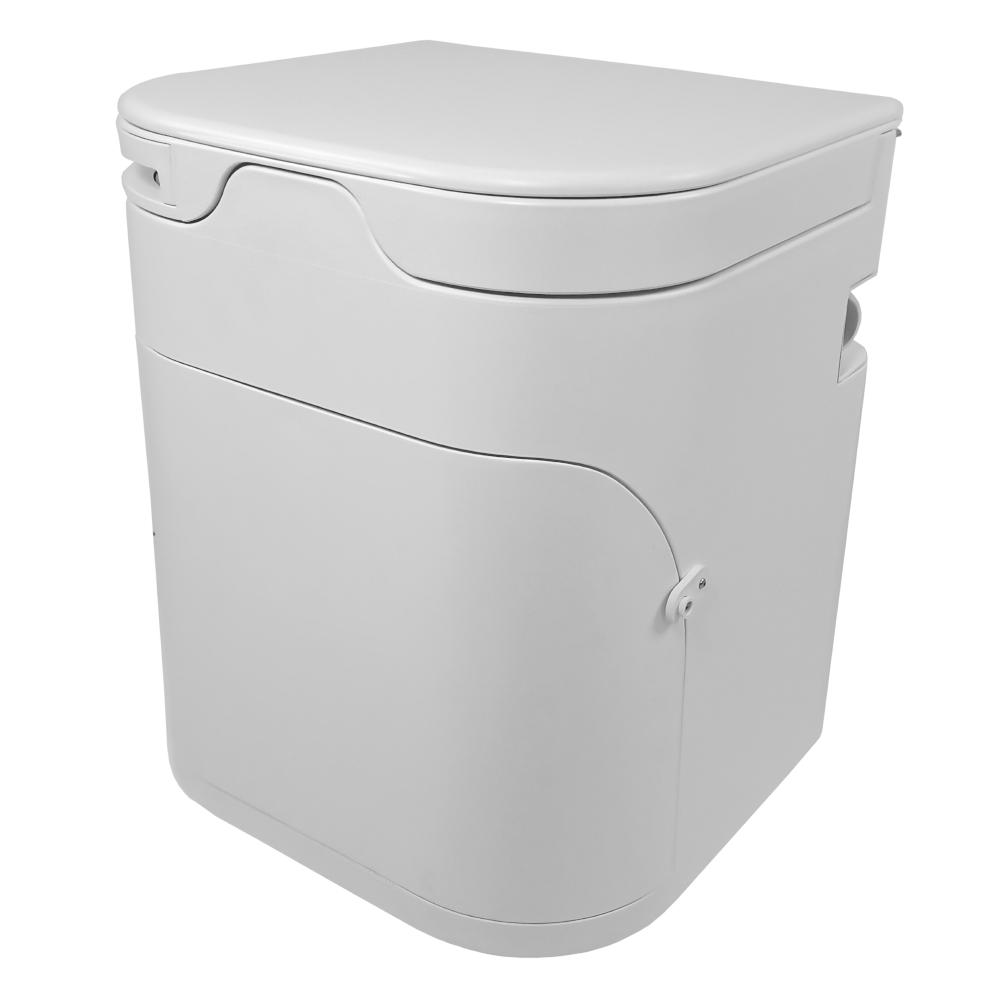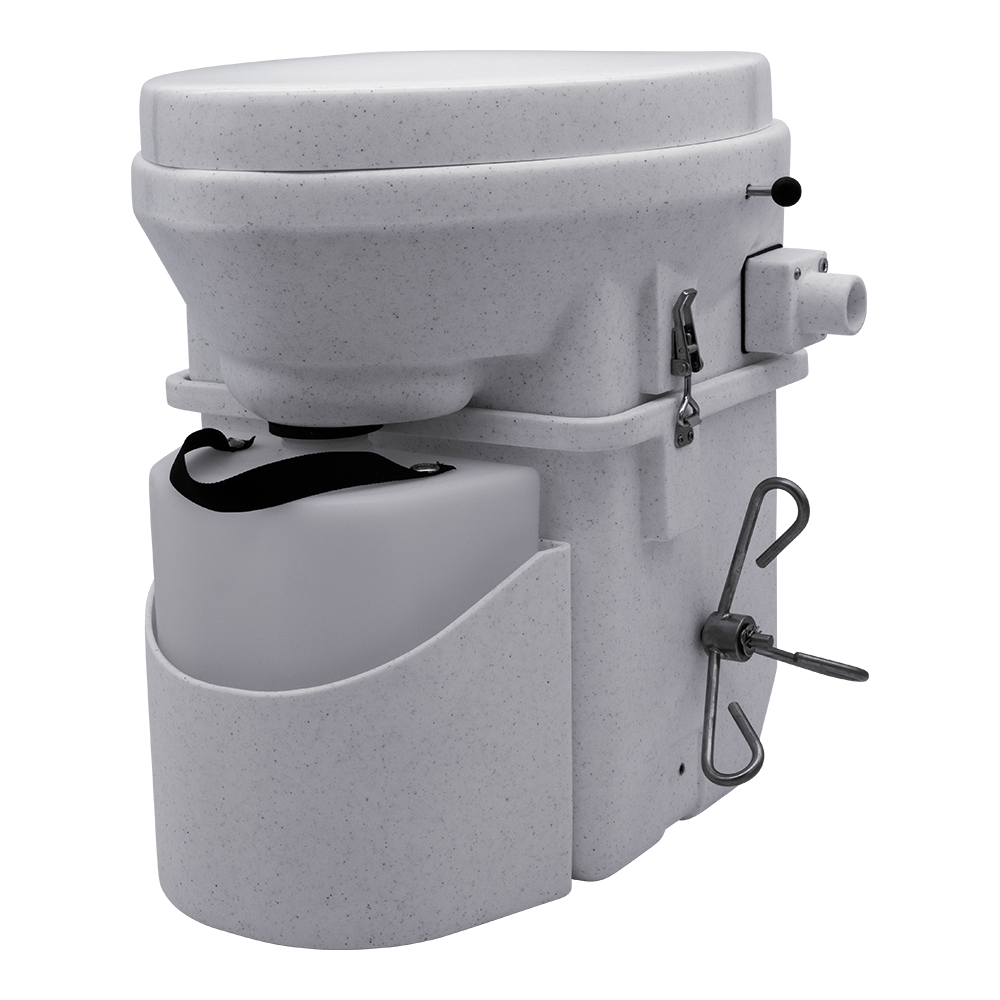How do garden shed composting toilets work?
Composting toilets in the garden shed work like classic toilets at home. The difference is that a composting toilet is perfect for the garden shed as a garden toilet because no water is used. Unlike chemical toilets, no chemicals are added to a garden toilet. Composting toilets have a separator insert, which ensures that the urine is separated from the solids during use. Both are collected separately in a container and can therefore be disposed of separately. The liquid that flows through the urine drain into the tank can be collected for up to 3 days. The solids are covered with litter and disposed of as required. A convenient composting toilet is best suited for long-term use in the garden shed; this is the higher class of composting toilet. This toilet is permanently installed and requires a power connection and an exhaust air system with fan. This version also eliminates the need for manual scattering, as an agitator is built into the solids container. This ensures that fresh coconut fibres are transported to the top after use and the solid matter is covered in an odour-tight manner. The liquids are also drained into an extra tank via a urine drain. Due to the constant drying process, the composting toilet has a service life of up to 6 weeks, depending on the model. If you want a compact solution, a classic, portable composting toilet is suitable.
Are composting toilets in the garden shed hygienic?
Yes, composting toilets in the garden or garden shed are very hygienic. You never come into contact with faeces, neither during use nor during disposal. The separation insert ensures that the faeces are separated in advance. The urine is drained into a urine container. The solid faeces are discharged into a canister for faeces. The canister for solids can be lined with a bag for simpler composting toilets. The use of compostable bags is recommended here. As soon as this has reached its filling volume, it is tied together and disposed of in the residual waste. When emptying a composting toilet, the loose substrate can also be transferred to (compostable) bin liners and disposed of in the residual waste. With both variants, the container does not need to be cleaned and is immediately ready for use again. The liquid container for urine can be emptied in the garden or in the conventional toilet and also does not need to be cleaned. If you dilute the urine with water, you have an excellent fertiliser without chemicals for non-edible plants and thus support the natural cycle.
Can I use my composting toilet in the garden shed?
Yes, in principle any composting toilet can be used in the garden, allotment, garden shed or garden shed. As every composting toilet works without additives, it can be used as required. Just make sure that it is a compact separating toilet with a bag or a composting toilet. Classic composting toilets are portable and do not need an electricity or exhaust air connection. Composting toilets, on the other hand, have to be permanently installed and connected and therefore take up more space.
How does composting toilet ventilation work in the garden shed?
Ventilation for composting toilets, especially composting toilets in the garden shed, is very simple. All you need is a power connection, a fan and an exhaust air hose. The exhaust air hose should be laid outside to ensure that the entire exhaust air system works properly in the toilet. This allows the exhaust air to flow into the open air and you don't have it in the garden shed or weekend house. The constantly running fan, which is powered by electricity, transports the air into the interior of the solids container and uses the exhaust air to ensure that the solid waste is constantly dried and therefore odour-free. If it is not possible to route the exhaust air hose outside, there is a special filter. This allows the air in the garden shed to flow out.
Garden shed composting toilets in comparison
A distinction can be made between a portable and a permanently installed version for the very special little place. Both have their advantages and disadvantages, although a permanently installed composting toilet without chemicals, which is used as a garden toilet, is more suitable for a garden shed.
| Portable separating toilet | Fixed composting toilet |
| With bag | Without bag |
| Short-term use | Long-term use |
| No solids flap / privacy screen | With solids flap / privacy screen |
| Spreading by hand | No need to re-spread |
| Without agitator | With agitator |
| Without power connection | With power connection |
| Optional fan | Not optional fan |
| Suitable for almost any litter | Coconut fibres recommended |
| Small urine container | Large urine container |
Designs of dry composting toilets for garden sheds
In terms of design, there is a wide variety of composting toilets. This is because there are different models for different purposes and space requirements. For example, a garden toilet for the allotment garden without waste water. There are also classic composting toilets and higher-quality versions. We have the OGO Nomad S and ATY Move in particular, these are compact, portable dry toilets with separation. For long-term use, we offer the OGO Origin and Nature's Head. Composting toilets are also available in various materials, such as plastic, metal or wood.




What is the odour like with garden shed composting toilets?
If the composting toilet is used correctly and properly as a garden toilet in the garden shed or allotment, there is no odour. As the excrements are collected separately and no chemicals or water are added, they remain odour-free. It is important that the solid trays are covered with substrate immediately after use so that no gases can develop. The litter also ensures that the solids in the camping toilet are dried and remain dry. As long as it does not become too damp in the solids container, no odour will develop. A closed lid on the camping toilet also protects against too much moisture and possible insects. Urine itself is naturally odourless, unless you take medication or eat certain foods. To ensure odourlessness, the liquid container should be emptied and dried out after three days at the latest. There is no need to clean it, as water residues can lead to an unpleasant ammonia odour. As the urine drainage works by separating it with the built-in insert in the camping toilet, there is usually no urine hose that needs to be cleaned.